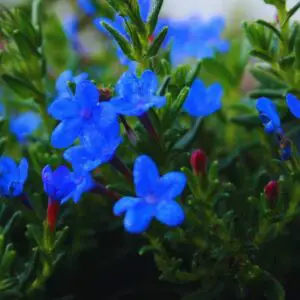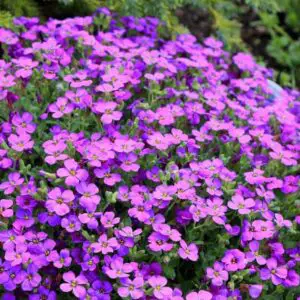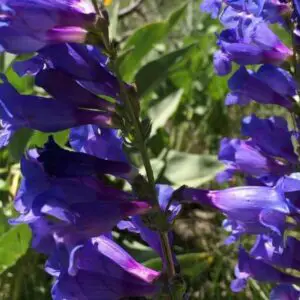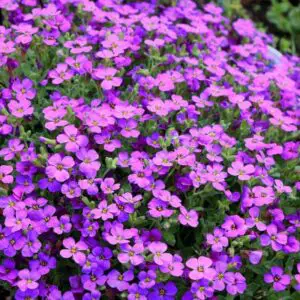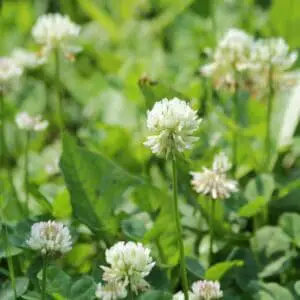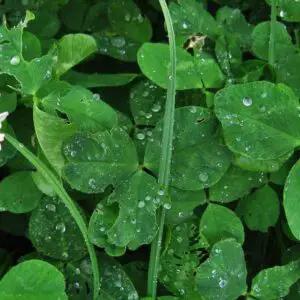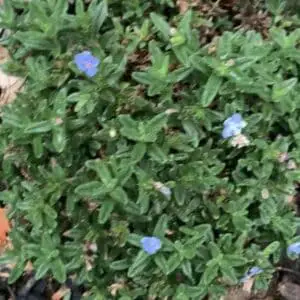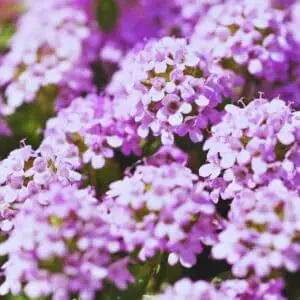Lithodora is a genus of flowering plants. The genus ‘Lithodora‘ is also the name for the most common species Lithodora diffusa. Lithodoras are low-growing evergreen shrubs. This plant produces 5 lobed, star-shaped, white or blue flowers.
Lithodora is an easy-to-grow, deer-resistant plant that is somewhat cold-hardy. This plant is a good ground cover for those who don’t want to spend a lot of time maintaining it. However, just like any other plant, Lithodora has its own problems and drawbacks. In this article, you will find some of the most common Lithodora problems and ways to resolve them.

Table of Contents
Lithodora turning black
Lithodora turning black is a sign that something is wrong with the plant. The most common cause for turning black is root rot. Too much water and poor drainage are the keys to Lithodora turning black.
Please continue reading the article for the solutions.
Featured post
Is Lithodora Deer Resistant? (Explained for Beginners)
Lithodora is a flowering plant in the borage family (Boraginaceae). This plant species is a …
Lithodora root rot
Root rot is one of the common Lithodora problems. And it is serious. It is very important that you take immediate action. If you are too late, the plant will not revive.
What is Lithodora root rot?
Lithodora root rot is a disease that causes roots to rot. There are many reasons that cause this. It is important to identify the real reason before curing it.
What causes Lithodora roots to rot?
The most common cause is wet soggy soil. The soil can get waterlogged by overwatering, poor drainage, or heavy rainfall. However, overwatering and rainfall alone won’t waterlog the soil. It is the drainage that actually causes soggy soil.
The soil type and the area the plants are planted matter when it comes to drainage. Sandy soil types drain very fast when compared to clay soils. So, sandy soils almost never have drainage problems. In heavy clay soils, water spends a lot of time before draining out.
The problem with waterlogged soil is that it limits the oxygen plant roots can take. The roots need oxygen, just like leaves. When they drown in waterlogged soil, they can’t breathe. If the soil condition continues, the roots will rot and die.
I recommend you to read this wonderful book about plant diseases.
Sometimes, the cause of root rot can be a fungus. According to pnwhandbooks.org, a fungus species called Berkeleyomyces sp. can cause root rot in 30+ plant families. Lithodora is also one of the affected plants. Phytophthora is another oomycetes (fungus-like) that causes root rot.
This fungus lives in the soil and even in peat moss or commercially available soil mixes. And they can survive in the soil for years. So, it is near impossible to get rid of them. However, this fungus mostly infects plants when they are in poor condition. Waterlogged soil is the perfect condition for the fungus and the worst for the plant.
How to identify Lithodora root rot before it is too late?
If Lithodora root rot is not identified and treated in a timely manner, it will cause the plant to die. There are few symptoms to identify root rot in Lithodora. However, it is difficult to identify due to the disease being developed under the soil.
- Yellowing leaves.
- Distorted leaves. (Small, twisted, or weird shapes)
- Dropping leaves.
- Bad smell around the base of the plant. (This is more of a sign to identify waterlogged soil.
- Discolored roots. They usually change to black or reddish-brown.
How to treat and prevent Lithodora root rot?
Treating root rot is difficult. So, prevention is the best way. If you already got root rot in your Lithodora plants, dig them up and clean them with water. Then cut and remove any affected roots with sterilized scissors or a knife. Then replant in new well-draining soil. Water and care for the plant until it establishes in the new soil.
I recommend you choose one of the following soil mixes. They are all high-quality mixes that are suited for various applications.
To prevent root rot, you need to do two simple things. Increase the drainage and control the watering.
Drainage can be easily improved by adding perlite or sand to the soil. The more clayish the soil, the more perlite needs to be added. If you are using containers, make sure they have enough drainage holes.
For watering outdoors, I recommend you use an automatic drip irrigation system. This will both save you water and deliver the right amount of water.
Lithodora turning brown
Lithodora can sometimes turn brown. The cause can be extended drought periods without water or too high or low temperatures. This Lithodora problem can be easily solved, unlike root rot.
Lithodora turning brown is a common sight in winter, especially if you have harsh ones. The plant even seems dead, but it is alive. The roots don’t die easily and they sometimes put out new growth even in winter.
Drought is another reason your Lithodora is turning brown. This plant requires moist soil at all times. So, regular watering is required. Letting the plant completely dry out for long periods of time can kill it.

Lithodora Heavenly Blue is dying
The most common cause for Lithodora Heavenly Blue dying is root rot. There are no other serious pests or diseases that can kill a Lithodora.
Careful watering and good drainage will keep the plant alive and happy. 🙂
Lithodora is not blooming
Lithodora easily blooms when ideal conditions are given. This plant is well suited for cool and less humid regions. If it is too hot and humid, Lithodora will not bloom.
How to get Lithodora to bloom?
- Give it more sunlight. Lithodora prefers full sun.
- Keep the soil moist.
- Fertilize with a Phosphorus rich fertilizer.
- Give some afternoon shade if it is too hot.
If your plants are healthy and if you followed these instructions, they should start blooming in no time.

Lithodora does not spread
This is probably the last Lithodora problem you have to worry about. That’s because Lithodora almost always spread. It can also be grown as a ground cover. (Creeping thyme is also a great one.)
How fast does Lithodora spread?
Lithodora spreads quite slowly. It is not a fast grower. It can spread up to 36 inches.
What to do if Lithodora is not spreading?
If the plant is not spreading, it means something is not right. Usually, it is watering, drainage, temperature, or humidity. Check each of these conditions and make sure your Lithodora has the ideal conditions.
I also recommend slow-release fertilizer. Don’t use granular fertilizer near the plant.
Unfortunately, you won’t have much success if you grow Lithodora in temperate and humid areas.

Lithodora is wilting
Lithodoras can wilt down mainly for two reasons. Underwatering or overwatering.
Overwatering
Overwatering limits the oxygen roots can take and it also causes root rot. When roots can’t breathe, they can also absorb water.
So, even when the soil is wet, plants can’t absorb water. So they wilt. People think this is due to not having enough water. So, they water even more and worsen the problem.
The solution for this is letting the soil dry and change the soil and improve the drainage.
Underwatering
Not getting enough water cause Lithodora to wilt. Regular watering is necessary to keep the plant happy. Consider using an irrigation system with a timer to regulate watering.
Frequently Asked Questions (FAQs)
Does Lithodora need a lot of water?
Lithodora requires moist soil. So, water regularly. But don’t overwater. It will kill the plant.
Is Lithodora drought-tolerant?
Lithodora is not a drought-tolerant plant. It will do well in dry soil.
How do you keep Lithodora blooming?
Plant Lithodora under full sun and give them regular watering. They will continue to bloom throughout the season.
Does Lithodora creep?
Lithodora creeps and forms a low, dense, creeping mat overtime.
Last update on 2024-05-17 / Affiliate links / Images from Amazon Product Advertising API
